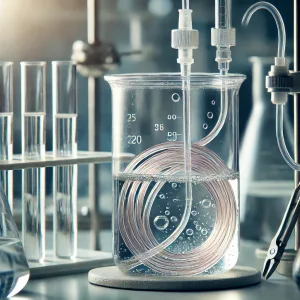The Science Behind Dialysis Tubing: Understanding Selective Permeability
Dialysis tubing is a fascinating tool used in scientific experiments to explore how selective permeability works. Whether you’re involved in a dialysis bag experiment or working on a dialysis tubing lab report, understanding how this material operates is key to grasping its role in separating substances. Let’s break down the science behind dialysis tubing and its selective permeability.
What is Dialysis Tubing?
Dialysis tubing is a semi-permeable membrane used in various scientific experiments. It acts like a filter, allowing certain substances to pass through while blocking others. This is due to its unique structure and properties, making it an ideal choice for studying separation processes.
How Does Selective Permeability Work?
Selective permeability refers to the ability of a membrane to allow some molecules to pass through while preventing others. Dialysis tubing is designed with pores of a specific size. These pores are large enough for some molecules to slip through but too small for others.
In a typical dialysis tubing experiment, you’ll find that the tubing allows water and small solutes (like salts and sugars) to pass through but blocks larger molecules, such as proteins or starches. This separation mimics the way our kidneys filter blood, removing waste while retaining essential substances.
Dialysis Tubing in Action
To understand how dialysis tubing works, let’s look at a common experiment known as the dialysis bag experiment. In this lab setup, a dialysis bag (a small section of the tubing) is filled with a solution and placed in a larger container filled with another solution.
Over time, small molecules in the larger container diffuse through the dialysis tubing and mix with the solution inside the bag. This process helps scientists study how different substances interact and separate based on their size and other properties.
Key Elements of a Dialysis Tubing Experiment
- Setup: The dialysis tubing is prepared and filled with a solution, usually containing a mixture of small and large molecules. It is then sealed and submerged in a beaker with a different solution.
- Observation: Over time, you observe changes in the concentration of substances inside and outside the dialysis bag. This helps in understanding how the selective permeability of the tubing allows for the movement of molecules.
- Analysis: By measuring the concentration of various substances inside the dialysis bag and in the surrounding solution, you can determine how effectively the dialysis tubing separated different components.
Importance in a Dialysis Lab Report
When you write a dialysis tubing lab report, it’s crucial to detail your observations and results accurately. This report should include:
- Objective: What you aimed to discover or test with your dialysis tubing experiment.
- Method: A step-by-step description of how you set up and conducted the experiment.
- Results: Data on the movement of substances through the dialysis tubing.
- Conclusion: Analysis of how well the tubing performed its selective permeability function and any insights gained from the experiment.
Real-World Applications
Understanding selective permeability through dialysis tubing has practical implications beyond the lab. It’s used in medical treatments such as dialysis for patients with kidney failure. In this context, dialysis tubing helps filter waste from the blood, demonstrating how this principle works in real-life scenarios.
Final Thoughts
Dialysis tubing is a simple yet powerful tool for exploring selective permeability. Whether you’re conducting a dialysis tubing investigation in the lab or writing a detailed dialysis lab report, the key is to focus on how the tubing allows certain substances to pass through while blocking others. This understanding not only enhances your grasp of scientific principles but also highlights the practical applications of this technology.
So next time you work with dialysis tubing, remember that it’s more than just a piece of plastic—it’s a gateway to understanding how substances can be separated based on size and other properties.